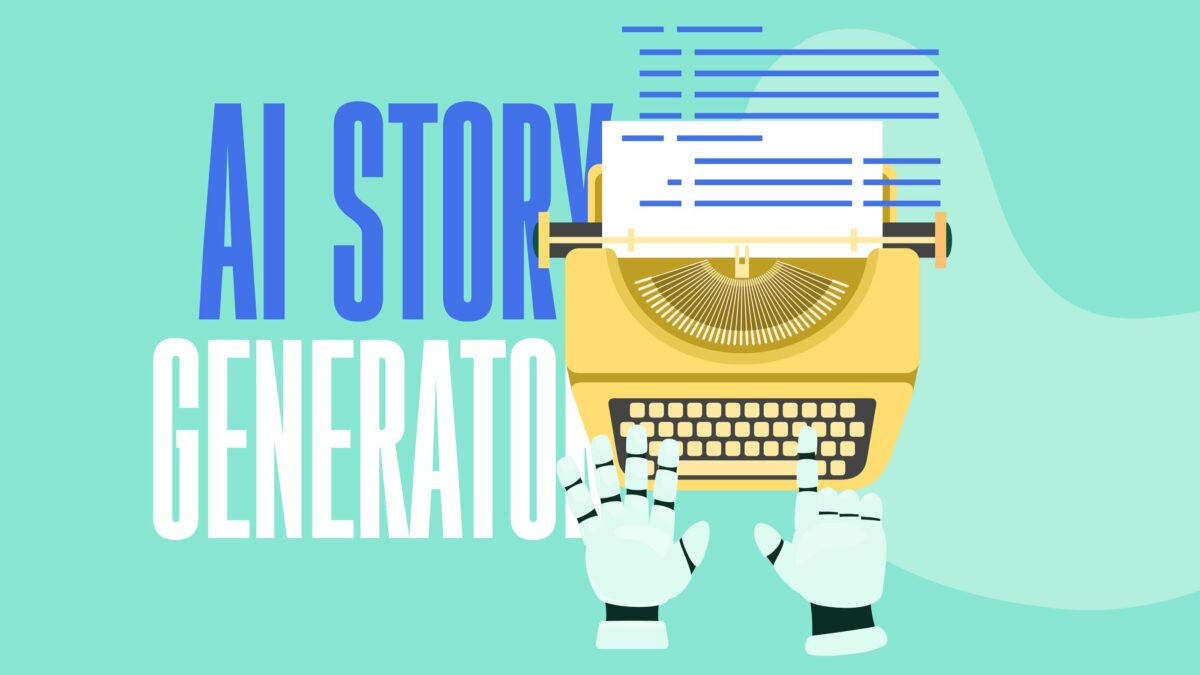There are quite a few AI-based tools available today, and each one offers something unique. However, perhaps the most-used AI programs today are generative AI tools, including those that generate stories. A Forbes research says generative AI will be worth $280 billion by 2032.
That’s why, you’d want to build an AI story generator, that could potentially help users write the stories they want. But a tool like that is a sum of many great features. But what exactly is an AI story generator compared to other generative AI tools?
Moreover, what kind of features do you need, and which development path should you take? Let’s find out.
What is an AI Story Generator? Compared to Other Generative AI
An AI Story Generator is an AI/Machine Learning-based program, which uses advanced AI algorithms to generate stories and narratives. Like other chatbots or generative AI tools, these programs also use pre-trained algorithms.
Except, there is one major difference between a common chatbot and an AI story generator. The difference in question is that the latter is designed to create engaging narratives and write in a story-esque manner while providing means to the writers.
Let’s take ChatGPT for example, and how it would do something with a prompt like this:
“A story about Tom experiencing morning life in New York streets.”
Now, let’s put it into ChatGPT first:
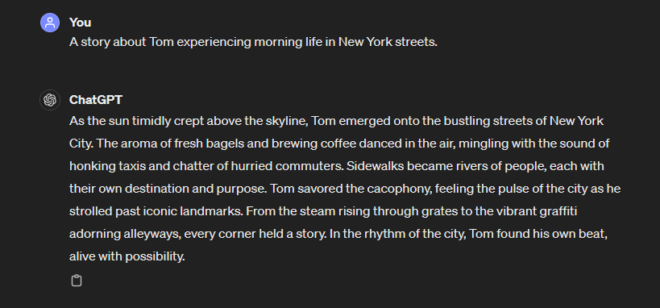
Some might say it’s quite extraordinary, while others might smell AI all over it. But, if we do the same with an AI story generator like this one from Summarizer.org, our results look quite different:

And once the story is generated, here’s our result:
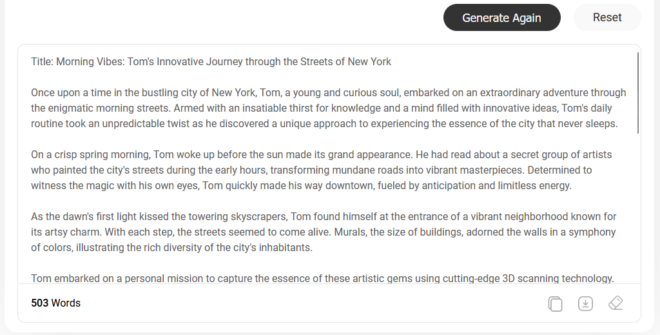
The story has a lot more details and offers a lot more depth compared to the ChatGPT version. That’s because ChatGPT is designed to be a chatbot only. Summarizer.org’s AI Story Generator is designed to write stories with minimal prompts.
Now, there are other options for AI story writers like these, which we’ll discuss later. But it’s important to understand how the two tools discussed above leverage AI, and the clear winner in this comparison is the story generator.
4 Key Features You Should Add in Your AI Story Generator
Now let’s talk about the development features that you should be adding to your AI story generator. It should feature quite distinctive elements compared to normal chatbots or generative AI tools. Here are five key things you need to provide:
1: Style Selection
Style selection is one of the key things you should provide in your story generator. For instance, if the user wants a narrated story, you should provide the ability to narrate a story. While some would want a story told in a more POV manner.
The idea is to provide features that help each writer/user create a story closest to their vision. So, providing a style selection like this would help your target users get just the type of story they want.
2: Tone & Type
Another thing you should focus on is the tone and type of the story your users want to write. Some would want to write a classic, while others would want a horror or thriller. The possibilities are endless and so they should be able to explore them.
Here’s an example of the AI story generator that we used earlier:
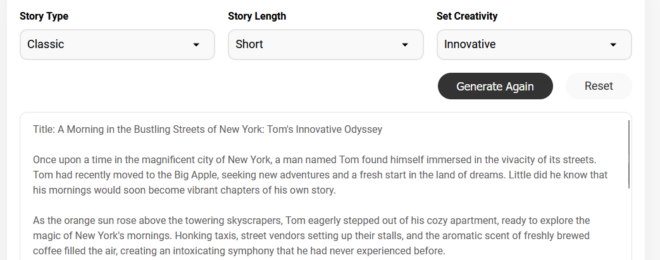
In the Classic mode, the story uses the traditional method of delivering the idea. But, for example, let’s say if we wanted the story to be more hilarious, then we could try the Humor story type:
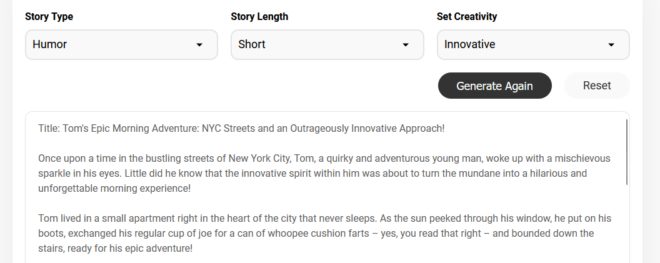
As you can see, the humorous setting takes it on a way different path than the earlier classical version. So, the point is, to provide something that doesn’t only distinguish stories, but also eases the job for the writer/users.
3: Creativity Level
Creativity level is yet another thing you should provide, and it should help the user select their level of creativity. Now, this depends on the type of deep learning model you use, such as GPT 3.5 or 4.0. However, it should look something like this:

When the user selects each level, like in the AI story generator that we demonstrated earlier, it should be written in that tone. Here are two examples:
Imaginative:
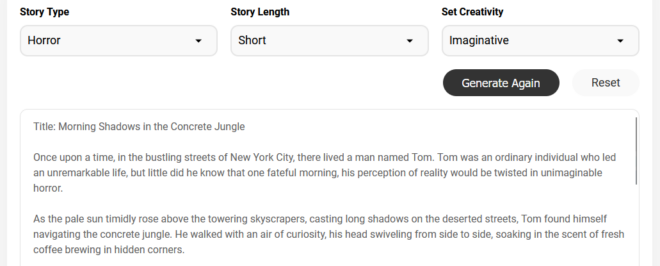
Inspired:
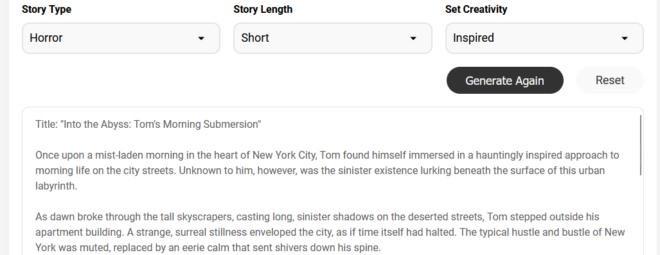
So, make sure your users are able to select the creativity level, and you provide enough means for them to leverage AI.
4: Story Length
Story length is one of the key aspects of any written story, so you should ensure your tool has the right options. The Summarizer.org’s AI Story Generator we used has three main options, and each one is made to write content in three main lengths:

The short one stays around 500-600 words:

While the longer version is around 700 words:

So, these are must-haves in an AI story generator.
3 Keys In Developing the AI Story Generator
Now let’s talk about the development part of the AI story generator. This part depends on your preferences, the technology you use, and design elements. So, here’s what you should do:
1: Technology Stacks & Which One To Use
Make sure you’re using a proper programming language with proper frameworks. The technology stacks make all the difference, and choosing the right ones can help you create a high-quality AI story writer in no time. Here are our suggestions for each category:
- Programming Language: Python
- Machine Learning/Pre-Trained Models: GPT
- Database Management: PostgreSQL
- Backend: Django or Flask
- Frontend: CSS, JavaScript, or Angular
- AdditionalServices: Git, Docker
This should help you get started properly and help you create a solid AI story writer.
2: UI Design and Writing Method
The design of your AI story generator and the writing method in it should be simple and straightforward. The UI of the tool we used earlier should serve as an example. So, you should make sure it has:
- A simple and readable interface.
- Colors that are easy on the eye.
- Offers dark mode.
- Provides options clearly, i.e., story type, creativity level, etc.
- And ensure the design isn’t cluttered.
This way, you will be able to keep it simple and ensure the users find it handy.
3: Testing & Finalizing
Testing and finalizing are two necessary steps to take, and you should ensure you create a checklist before deploying the tool. So, you should check for any usability problems, like errors that might pop up when users try different methods.
Or you should ask writers or other story experts to check the tool before deploying it. Besides, it’s always important to provide updates and make changes even after uploading the tool.
Conclusion
These are some of the key features and development paths for building an AI story generator. Remember, it’s about creating something that the users not only find helpful but can also leverage to break out of writer’s block, or simply generate creative ideas to work with. So, providing them with the options we explored can help you do just that easily.
